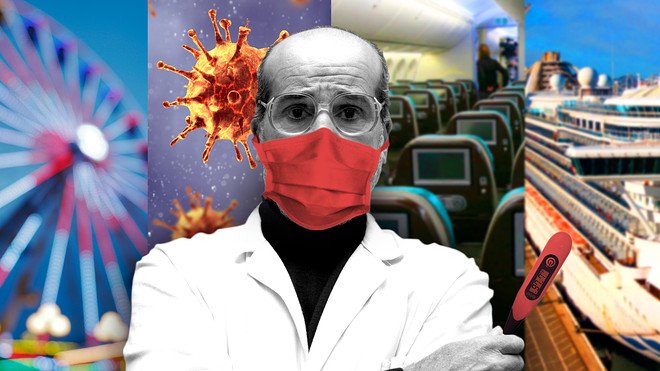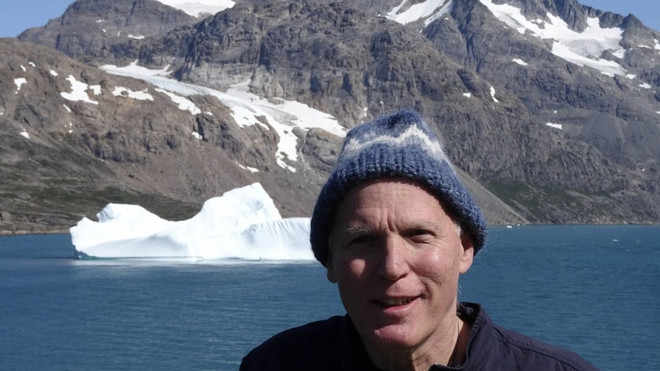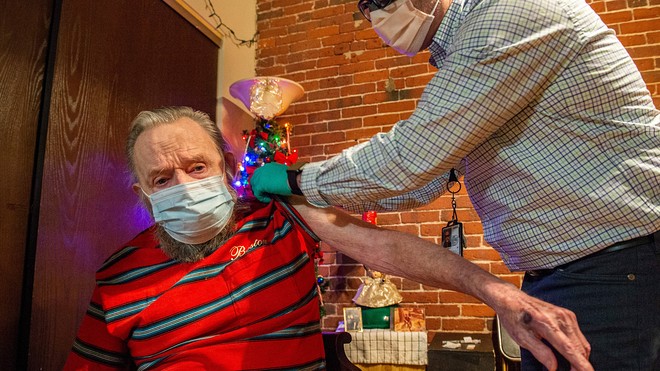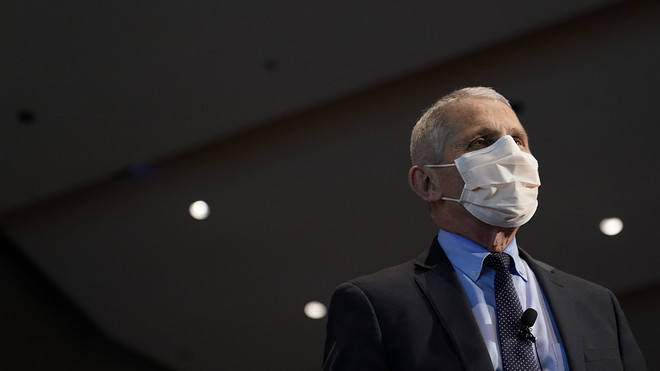
The suspension of a vaccine runs the risk of affecting public opinion surrounding the entire process.
MarketWatch photo illustration/iStockphoto
Achieving herd immunity through mass vaccination involves a delicate — sometimes tricky — dance with side effects, public opinion and virus variants. All three are unpredictable, and can turn when you least expect it.
The rollout of coronavirus vaccines has not been without challenges, but the government’s goal to not rely on just one vaccine has limited the scope of a setback involving any one product. As this week’s events illustrate, however, the suspension of a vaccine runs the risk of affecting public opinion surrounding the entire process.
And yet the expectation of problems with vaccines is effectively built into the process.
The Food and Drug Administration and the Centers for Disease Control and Prevention recommended a pause in the use of the Johnson & Johnson vaccine this week as they examine six severe cases of blood clots among the roughly 7 million people who have had the vaccine administered. J&J also halted its rollout in Europe.
The vaccine from J&J unit US:JNJ Janssen is an adenovirus vector-based vaccine that only requires one shot. Clinical trials showed it had 72% efficacy in the U.S.
“ ‘Hiccups in production and hiccups in safety are inevitable.’ ”
The two-shot mRNA-based vaccines made by Pfizer US:PFE with German partner BioNTech SE US:BNTX and Moderna US:MRNA make up the majority of shots administered in the U.S., and both were about 95% effective in clinical trials. (Mayo Clinic research puts their “real world” effectiveness at closer to 88.7%, still high.)
The Food and Drug Administration gave all three vaccines “emergency use authorization.” Vaccines were brought to market more quickly because there is a public-health crisis that has already taken 565,067 Americans lives. It is not as rigorous as full FDA approval.
“Hiccups in production and hiccups in safety are inevitable,” said Dr. Andrew Pavia, the George and Esther Gross Presidential Professor at the University of Utah and head of the university hospital’s pediatric infectious-diseases unit.
“It was a wise decision to spread the risk,” he told MarketWatch. “Factories can be hit by a hurricane, run out of a supply, or be hit by contamination that forces them to shut down.”
The most recent J&J blood-clot issue is similar to one that caused many European countries to pause and/or restrict use of the AstraZeneca US:AZN vaccine developed with Oxford University, which is also an adenovirus viral vector-based vaccine. The U.K. has restricted its use to those over age 30.
On Wednesday, Denmark said it would permanently halt use of AstraZeneca. Other European countries have restricted its use.
Currently, 23% of the U.S. population has been fully vaccinated and, the Centers of Disease Prevention told CNN, 5,800 vaccinated people have still gotten COVID-19. Of these “breakthrough cases,” 74 people died and several became seriously ill.
It’s a grim reminder that the vaccines are not 100% effective, and a variety of vaccines will help guard against one not being effective against a variant.
“It’s still a race between the variants and the vaccine,” Amesh Adalja, a senior scholar at the Johns Hopkins Center for Health Security and a spokesman for the Infectious Diseases Society of America, told MarketWatch.
Operation Warp Speed, as the Trump administration called its vaccine development and distribution program, has been key to this success, he said.
“ ‘It’s still a race between the variants and the vaccine.’ ”
“Part of Operation Warp Speed was not knowing which ones would cross the finish line, and having alternative vaccines that can handle the J&J pause and other vaccines in the pipeline,” Adalja said. “We are increasingly not supply-constrained in the U.S. because of the bulk manufacture of vaccines.”
The FDA and CDC said the J&J pause would give their scientists time to investigate the six cases of blood clotting in vaccinated individuals. Those cases of cerebral venous sinus thrombosis, a blood-clotting disorder, have emerged out of the 6.8 million–plus people in the U.S. who have received this vaccine.
All six cases of blood clots occurred in women ages 18 to 48. One woman died, and a second remains in critical condition, according to information released by the FDA. “We are recommending a pause in the use of this vaccine out of an abundance of caution,” health officials said.
President Joe Biden, speaking to the media during an Oval Office meeting on Tuesday, emphasized that his administration has ordered 600 million doses of the mRNA vaccines from Pfizer and Moderna and thus can vaccinate all adults even without either the Johnson & Johnson vaccine or AstraZeneca’s, which has not been authorized in the U.S. and has been paused in other countries, also over blood-clot concerns.
But the different efficacies of vaccines, their reported responses to variants and their respective side effects appear to take tolls on public opinion.
“When I was offered Moderna, J&J wasn’t even an option. It was never in my consideration not to take it,” said Maury Newburger, a New York travel consultant who received the Moderna vaccine in March.
“Knowing what I know now, I probably would not take the J&J,” he said. “I still think I would have taken the two-shot vaccines.”
Also see:U.S. COVID vaccine program faces setback with J&J jab, as experts say there is no cause for alarm

Travel consultant Maury Newburger in Greenland before the coronavirus pandemic. He received the Moderna vaccine in March. ’Knowing what I know now, I probably would not take the J&J,’ he said.
c/o Maury Newburger
The good (and the bad) news
Pfizer-BioNTech and Moderna supply the majority of vaccines in the U.S., and currently ship roughly 23 million doses a week in the country. The White House said the J&J pause would not have a “significant impact” on the rollout in the U.S.
”We’ve been doing fairly well and not having the outcome Europe is having,” Adalja said. “We have successfully vaccinated high-risk populations: nursing-home residents and those in community dwellings. We’re nowhere near the winter surge. Nursing-home deaths have plummeted.”
White House COVID-19 response coordinator Jeff Zients said in a statement that the J&J pause “will not have a significant impact on our vaccination plan“ as the J&J vaccine makes up less than 5% of the recorded shots in the U.S. to date. That was the good news.
“ ‘What happened with J&J is forcing people to have questions with all vaccines.’ ”
Now, for the bad news: “Unfortunately, there is always going to be a halo effect in a negative way,” Dr. Aaron Glatt, who chairs the department of medicine at Mount Sinai South Nassau in Oceanside, N.Y., told MarketWatch. “What happened with J&J is forcing people to have questions with all vaccines.”
The J&J vaccine “remains an extremely important vaccine for a fatal disease,” he added. “These types of things make vaccine-hesitant people more concerned.”
“Certainly, having other vaccines has been extremely helpful because there can always be manufacturing issues, or different strains may or may not be effective against a particular vaccine. That’s not intentional, it’s just the way science works,” Glatt said.
“The boosters, if and when they do come, will be more easily approved,” he added. “We’ve done most of the legwork already. It’s impossible to predict what will happen. It’s possible the vaccines will have efficacy against different strains. Time will tell, and the different strains will tell as well.”
In one recent Kaiser Family Foundation poll, taken before the J&J vaccination pause, 13% of Americans said they would definitely not get a vaccine, and 7% said they would get one only if required.
“As humans, we are not very good at translating risk into action,” Pavia said. “If I have the chance of being one of the 500,000 who die of COVID, how do I balance that with the one person who had a fatal side effect, if it’s a side effect at all? It’s the same perceptual problem when we blindly drive to the airport texting, yet we worry about the airplane.”
In the aftermath of the J&J vaccine pause, Barbara Alexander, president of the Infectious Diseases Society of America, said that the American public must continue to receive clear, accurate and up-to-date information, and have its questions answered, “so that we can maintain and build trust and confidence in COVID-19 vaccines.”
“The risk of becoming infected with COVID-19, and the potential for severe illness or death, remains a serious concern, and we urge everyone who is eligible to take the opportunity to be vaccinated with one of the currently available options,” she added.

Todd Paul administers the Johnson & Johnson Covid-19 Janssen Vaccine to Gerald McDavitt, 81, a Veteran of the United States Army Corps of Engineers, at McDavitts home in Boston, Mass. last month.
AFP via Getty Images
The appeal of J&J and AstraZeneca
The latest complication has further delayed a rocky rollout in the European Union, which ordered approximately 200 million doses of the J&J vaccine in 2021.
On Wednesday, the EU ordered 50 million more COVID-19 vaccine doses from Pfizer-BioNTech. “Those 50 million doses were initially foreseen for delivery in the fourth quarter of 2021. Now they are available in quarter 2,” European Commission President Ursula von der Leyen said in a statement.
“We have made the decision to proactively delay the rollout of our vaccine in Europe,” J&J said in a statement Tuesday.
Moderna started its vaccine rollout in England on Tuesday, providing an alternative to the AstraZeneca vaccine. In Ireland, where the Pfizer-BioNTech and Moderna vaccines are also available, authorities decided to limit AstraZeneca to people over age 60 for the same reason.
“ AstraZeneca was an appealing option for poorer countries and rural communities. ”
The AstraZeneca vaccine was an appealing option for poorer countries and rural communities, said Bill Schaffner, professor of medicine in the Division of Infectious Diseases at the Vanderbilt University School of Medicine in Nashville, Tenn.
“AstraZeneca was supposed to be a relatively inexpensive vaccine, and it can be handled at conventional refrigerator temperature,” he said. “The issues with this vaccine is putting a substantial crimp into the plans of distributing it internationally.”
The J&J vaccine, meanwhile, was an attractive prospect for people who had a particular dislike of vaccines and/or needles, Schaffner added.
“The J&J vaccine has kind of caught on because it’s one and done, so this pause will no doubt slow us down,” he said. “In our state, as we try to vaccinate more people in rural areas, we’ve run into real vaccine hesitancy or indifference to getting vaccinated.”
Russia’s Gam-COVID-Vac, or Sputnik V, coronavirus vaccine was the first in the world to be approved last August, and Hungary was the first country in the European Union to approve it. Russia, too, has rolled out more vaccines. A second Russian vaccine, EpiVacCorona, was registered in October. Last month, Russia approved a third domestic COVID-19 vaccine, CoviVac.
As of Thursday, 31.4 million people have been infected by the novel coronavirus first identified in Wuhan, China, late in 2019. Worldwide, more than 2.9 million people have died from the disease.
Anthony Fauci, the director of the National Institute of Allergy and Infectious Diseases, has said that good “herd immunity” would equate to 70% to 85%, and that the U.S. should start to see a return to normalcy by the fall. That, of course, depends on individuals’ age, circumstances and underlying conditions.
On Wednesday, he told NBC: “At the end of the day, it could actually diminish hesitancy by saying, ‘Boy, those people they are looking at that very carefully, and when they say something’s safe you can believe it’s safe.’ So it goes both ways.”
“Herd immunity is likely something that will happen in late summer,” Adalja said. “We’re not going to get COVID zero — it’s going to be with us season after season, but it’s not going to have the ability to cause a public health emergency. The key was to tame it, and the damage it was causing.”
Vaccine variety also helps protect against variants. “If there is a manufacturing issue or side effect issue that needs further delved into, there won’t be a complete halt of individuals getting vaccinated,” Ravina Kullar, an infectious-disease expert with the Infectious Diseases Society of America and adjunct faculty member at the University of California, Los Angeles, told MarketWatch.
“Further with the 3 variants of concern (B.1.1.7, B.1.351, P.1) and other variants that may emerge, if one vaccine may not work against a variant, there will be choices with other vaccines,” she said.
Israel has vaccinated over 50% of its population so far. A preprint of a small study, which was published last Friday, said the B.1.351 coronavirus variant, first detected in South Africa, was more likely to infect people in Israel who had been vaccinated with Pfizer’s vaccine.
The study has not been peer reviewed, but it was still of particular interest in Israel, which has relied predominantly on the Pfizer-BioNTech vaccine.
Fauci said clinical data thus far indicates the mRNA vaccines developed by Pfizer with partner BioNTech and by Moderna provide protection against B.1.1.7, first detected in the U.K., but their efficacy is thought to drop against the B.1.351 variant, a rarer strain of the virus, at least in the U.S.
On Thursday, Fauci told the House Select Subcommittee on the Coronavirus Crisis that the endgame was a universal vaccine, CNBC reported. “There are a number of ways of doing that, we have important and new platform technologies and we believe for example that we can apply the mRNA technology to get to that goal of getting a broad response against all possible variants,” he said.
For his part, Newburger, the travel consultant, never got a flu vaccine in the past, but the coronavirus pandemic made him rethink his approach to vaccinations. “I never did believe in the flu shot,” he said. “I maybe got sick one or two days a year, but this was the first year I got the flu shot. It was the combination of COVID, traveling and the possibility of catching something, and this time I thought, ‘I’ll get it.’ ”
Newburger said there will always be vaccine holdouts who remain beyond persuasion as to the benefits of any vaccine. “There’s a very small group of people who don’t believe in it for religious reasons or political reasons, or they’re just completely oblivious,” he said. “That’s hard for me to comprehend.”
U.S. Secretary of Transportation Pete Buttigieg suggested in a recent CNN interview that perhaps those who resist vaccination on religious grounds might instead choose to consider inoculations to be part of a divine plan.
See:Denmark becomes the first country to halt use of AstraZeneca vaccine permanently

Dr. Anthony Fauci, director of the National Institute of Allergy and Infectious Diseases, has said good ‘herd immunity’ would equate to 70% to 85%, and that the U.S. should start to see a return to normalcy by the fall.
Getty Images










Add Comment